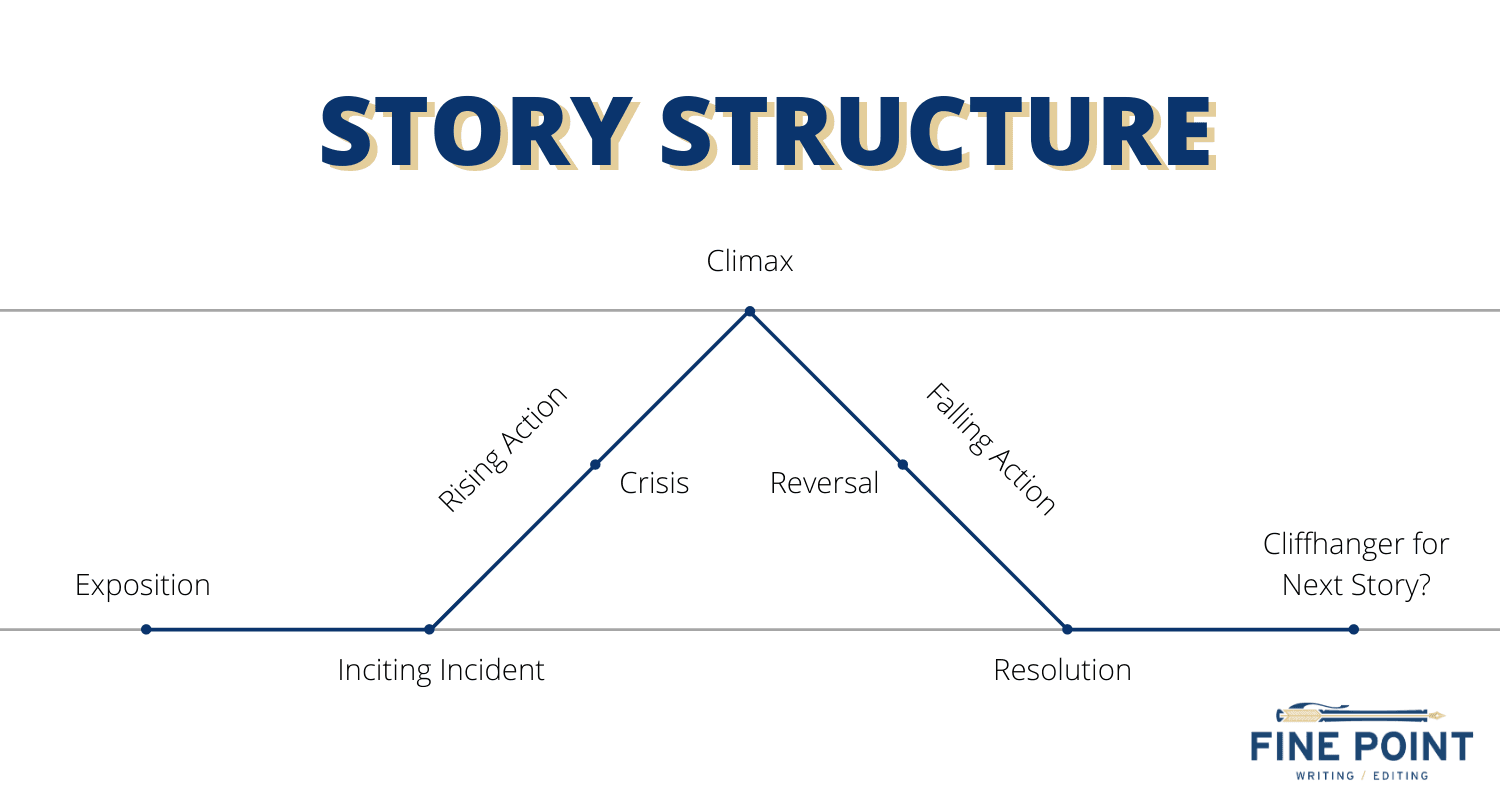Let me tell you a story.
How to Use Story Structure to Enhance Your Marketing Efforts
These six words are a hook for anyone. If you’ve ever binge-watched six seasons of a show on Netflix or obsessively followed a series of books, you’ve already experienced the intense pull of a well-told story. In fact, stories are a basic need. You can see this from the way we describe stories. We binge tv shows. We consume podcasts. We describe stories the same way we describe our need for food.
Stories create strong emotional bonds between your brand, your products, and your customers.
Today, I’m going to teach you an exercise (no, not the type you do while sweating and grunting in your home gym!) This exercise is going to help you understand how to harness the power of storytelling in your communications, from presentations and speeches to promotional content to full-length books. I want you to be able to walk away today with a clear picture of how to structure a story in any context. This is an invaluable tool that will help you connect with other people on an emotional level.
Let’s start by talking about what story structure is. There are several different versions of story structure according to academic thought leaders, but they can all be superimposed to create the basic outline of a story.
This is what the combination of those elements looks like. I’ll use the example of a murder mystery to outline what I’m talking about at each stage.

Exposition
As you can see, the story starts with the exposition, which can also be called an introduction. This is where we’re getting situated and learning which people we need to care about and why we care about them. We might meet Detective Underdog, who is often overshadowed by his older sister, Justice, who just so happens to be a crown prosecutor.
When Justice comes to family dinners, she tries to show up her brother with her advanced knowledge of the criminal justice system. Detective Underdog ends up feeling like no one in his family respects him as a result. So, right away, we know that Detective Underdog has something to prove, and it’s not just that someone is guilty of a murder.
Inciting Incident
Next, we have the inciting incident. In this section, you need to suddenly up the stakes. In a murder mystery, this is where the detective learns that there’s been a murder. He also learns that his older sister will be the prosecutor on the case, breathing down his neck at all times.
Rising Action
The rising action is the “who dunnit” part where it leaves you NEEDING to know who dunnit. We might see some suspects beginning to take shape here and we’ll see that Detective Underdog is getting railroaded by his sister at all turns and his frustration is rising.
Crisis
Now, right when we’re starting to think we know “who dunnit,” there’s a new crisis! There’s another murder, but the original suspect was already in jail, so now everyone knows it must be someone else who committed the murder. Now your audience’s mind is really racing and they’re just WAITING to know what’s going to happen next.
Climax
Then we come to the climax, which is the most important part (of a story, that is). This is the moment where Detective Underdog is standing in a room with all of the potentially guilty parties and he’s about to point a finger at someone. There are a few suspects, and one that Detective Underdog’s sister wants to prosecute, which means he’s under intense pressure to point the finger there. Your audience should be hanging off the edges of their seats. They can’t possibly look away.
Reversal
Next, we have the reversal. I like to think of this as a “reversal of fortunes.” This is an interesting part of story structure that’s often missed, but I think it’s important to break it apart from the climax. This is where all the expectations you’ve been leading up to are suddenly shattered. Detective Underdog points at someone you NEVER SUSPECTED and begins to explain the crime from the beginning. Suddenly, it all comes into focus. How did you miss it? How did everyone else miss it?
Falling Action
But it can’t end here, because you still want to know what happens next. The falling action is the time where you give your audience a second to digest everything that just happened. As the murderer is placed behind bars, we see Detective Underdog receive a promotion.
Resolution
And finally, we come to the resolution, because even though we know who committed the murder, we still have to know what happens to Detective Underdog. In a lot of cases, the resolution will be somewhat mirrored to the introduction. So, we see Detective Underdog at another family dinner. This time, his sister Justice stands up and gives a toast to his excellent detective work and he feels like his family respects him.
Story Arc
You’ll notice that story structure always forms an upward arc, and that shape is important because we need to build up the tension and then fully release it. Stories are cathartic, which means we need to walk someone through an exciting experience. By giving stories this structure, we’re keeping an audience enthralled throughout it, always wondering what comes next.
Applying Story Structure to Your Marketing
You can also use story structure in your business. For example, a blog could be formatted as a story, or even a short social media post can be structured as a story – even if the content is non-fictional. You might not be able to fit in or identify all of the parts of a story listed here, but even if you can get a few critical ones (like rising action, climax, and falling action), you’ll be on the path to creating stories in your content.
The most important thing to remember is that practice makes perfect. For anyone who is eventually planning on writing that book (and yes, I know you’ve all thought of it at some point!), this is a great way to “get in shape” for writing a full-length book.
So, my challenge to you is to create one story this week using story structure. If you’d like to send it my way, I’d love to look at it and give you some feedback. Happy storytelling!






